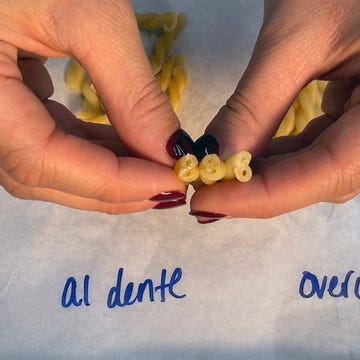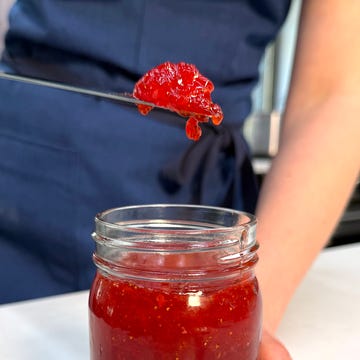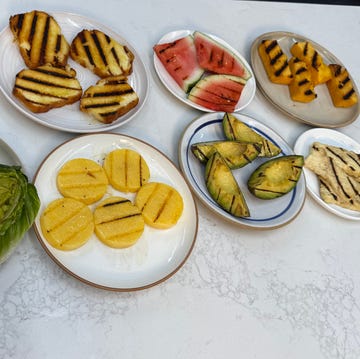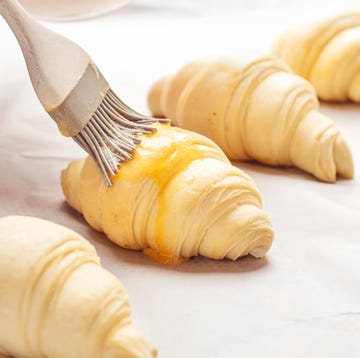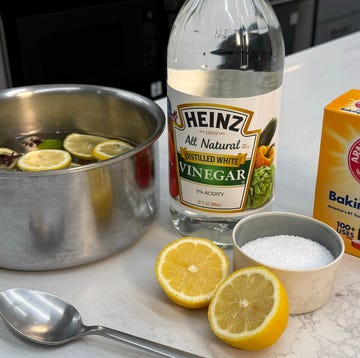Feta has been around for centuries, but it has really popped off recently thanks to viral recipes like baked feta pasta (not to mention baked feta chickpeas, baked feta frittata, and baked feta bites). But not all feta tastes the same or even comes from the same place. The salty, creamy cheese has varying flavors and textures depending on where in the world it's made and what type of milk is used in production. Here are some things to think about when shopping for your next block.
Greek
True feta comes from the following legally defined geographical areas in Greece: Thrace, Macedonia, Epirus, Thessaly, Sterea Hellas, Peloponnese, and the Prefecture of Lesvos, according to the Greek cheese producer KOLIOS. Just like "real" Parmigiano Reggiano or Aceto Balsamico can only be made in certain regions using specific guidelines, authentic Greek feta must be made in Greece and often produced with unpasteurized milk. The real stuff will contain a red and yellow label marked "DOP" for "protected designation of origin." According to the interest group Wisconsin Cheese, Greek feta is "made with 100% sheep milk or with up to 30% goat's milk mixed in." If the feta has more sheep's milk, it may be softer and milder. With the addition of goat's milk, it might be a little firmer, crumbly, or waxy in texture. It should always be packed in brine.
French
Like Greek feta, this style of feta cheese (often called Valbreso after the popular French producer) is made with sheep's milk or a combination of sheep and goat. According to Valbreso, French feta-style cheese relies on the milk from a specific breed of sheep called Lacaune. It tends to be creamier and milder compared to Greek feta. Feta or feta-style cheeses don’t melt like cream cheese or mozzarella, but French feta has a very creamy texture that will almost melt under high heat. This feta is excellent for roasting on a sheet pan with vegetables, mixing into pasta, or adding to an egg omelet.
Bulgarian
This type of feta, also known as "sirene" cheese, is also made with sheep's milk or a combination of sheep's and goat's milk. You might also find some made with cow's milk. Unlike Greek or French feta, Bulgarian feta is firm yet creamy and very tangy—ideal for blending into dips. It can be made with milk that's either pasteurized or unpasteurized.
American
American feta is often labeled as "feta," but that does not mean it’s from Greece. American feta is often made with cow's milk, making it drier in texture than other types of feta. The one I tried (Organic Valley) was mild in flavor and not as grassy or funky as a sheep or goat's milk feta would be. It also had some lemony notes to it as well. The flavor was very different overall from a traditional sheep milk Greek feta. It may or may not be packed in brine. American feta is less likely to melt, so use it for recipes where you want the cheese to hold its shape, like these baked feta bites.



